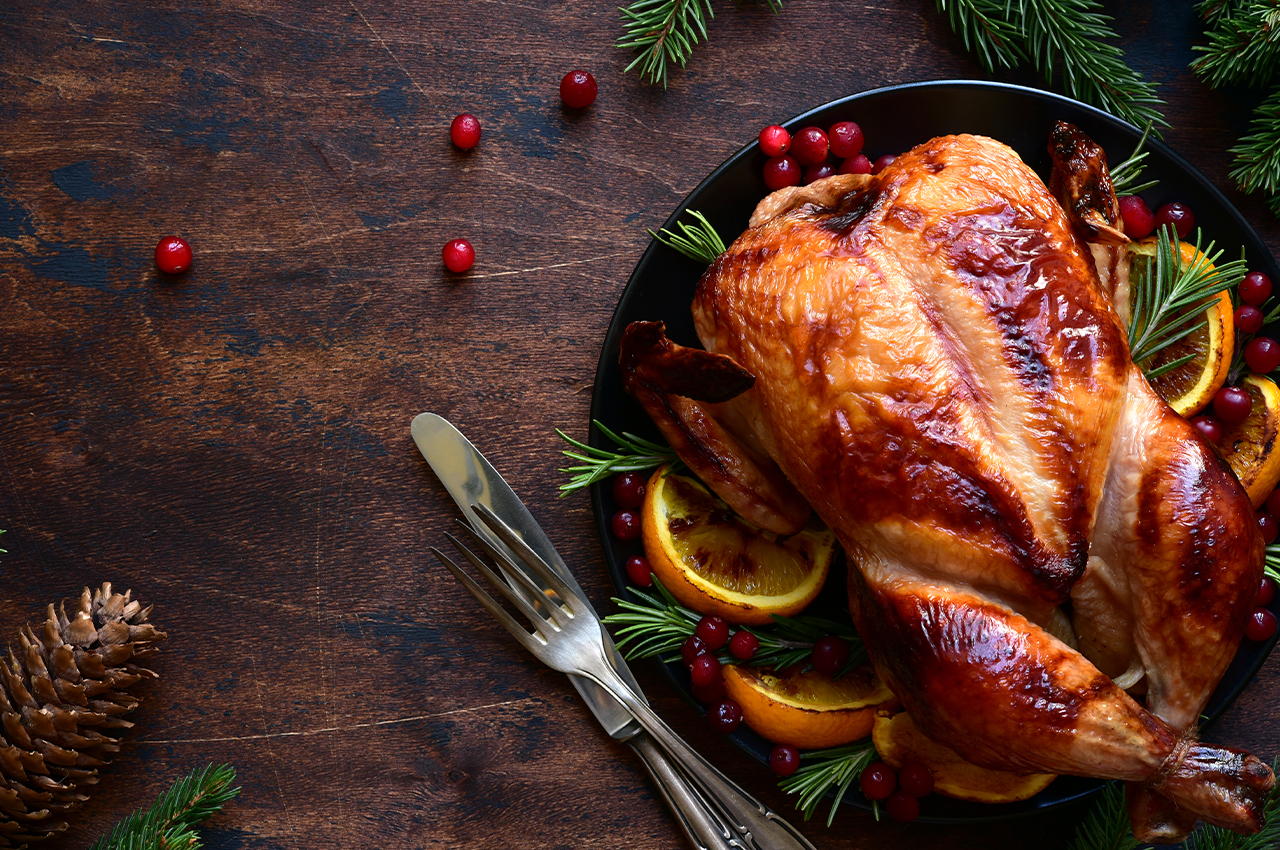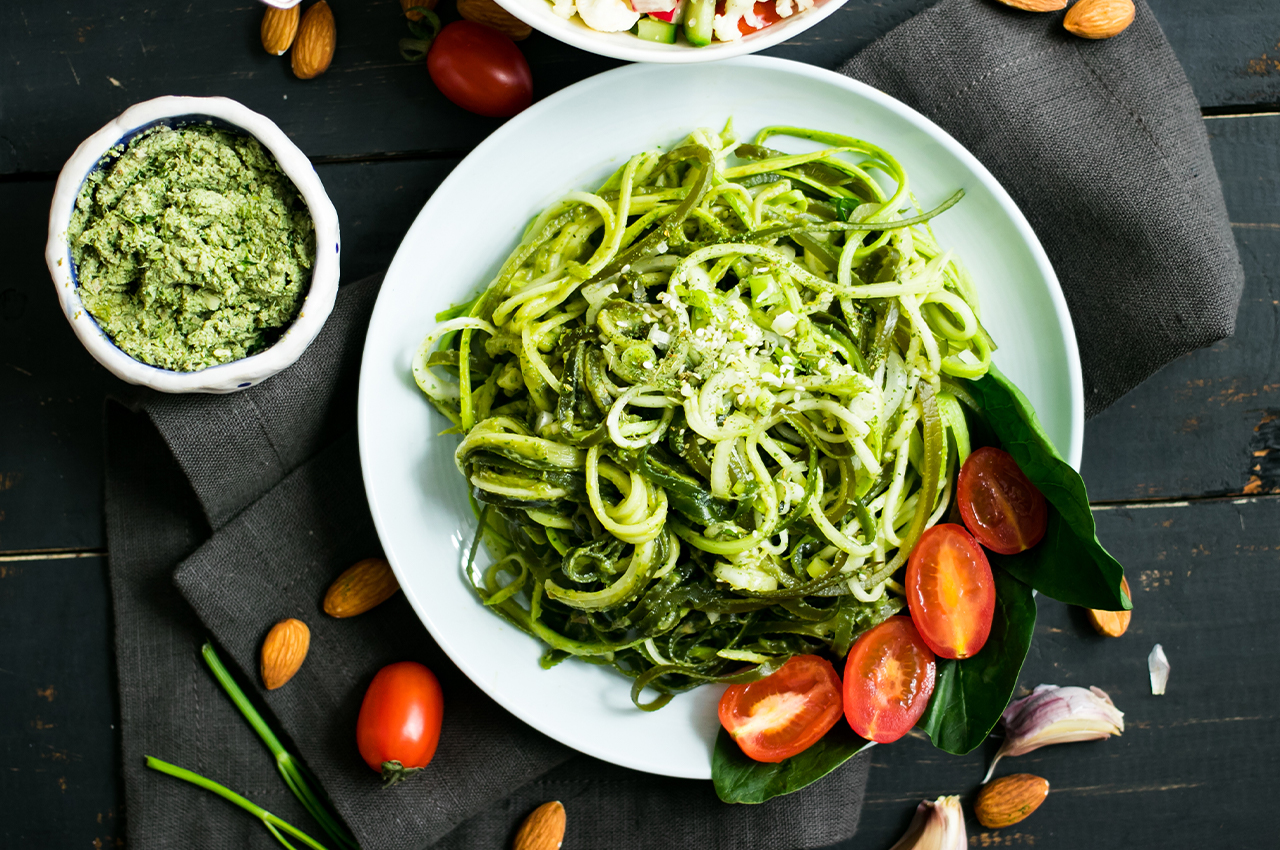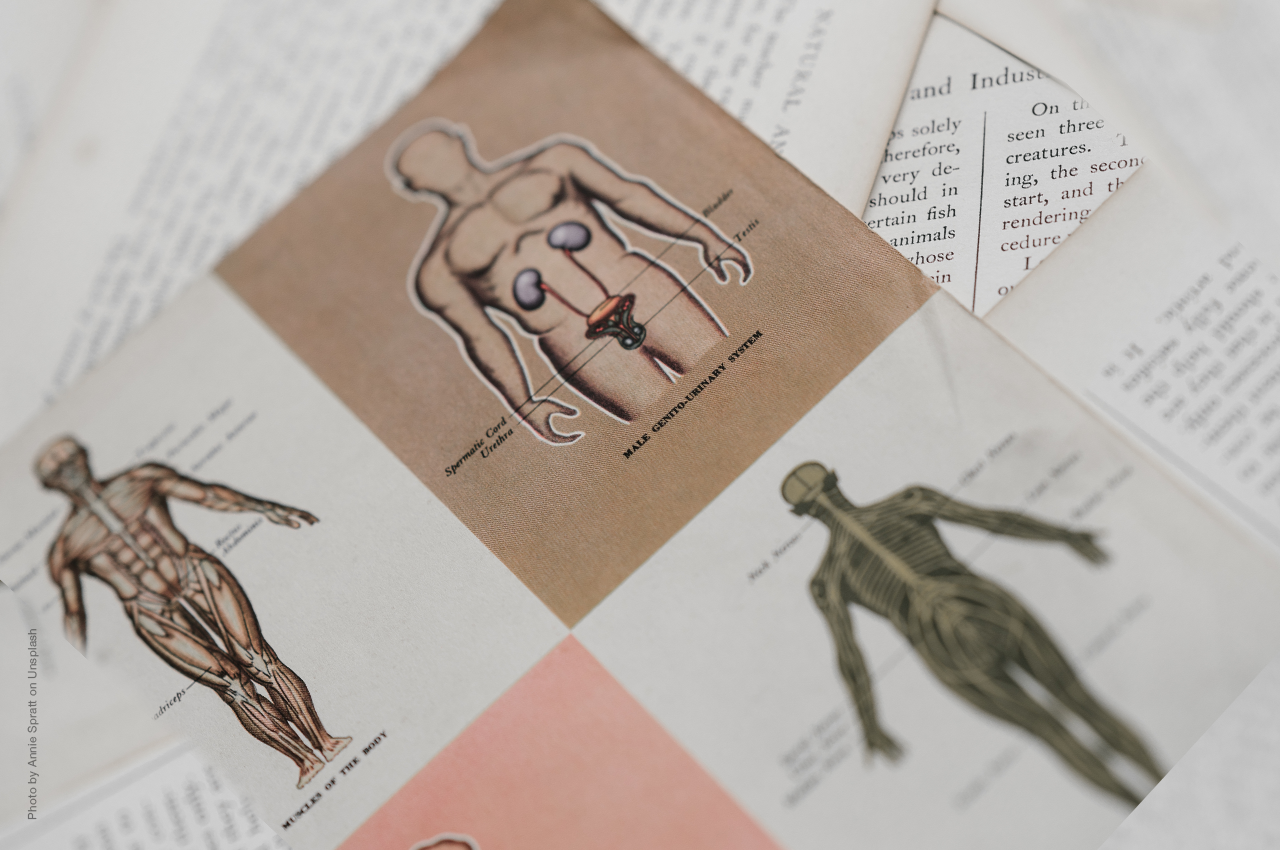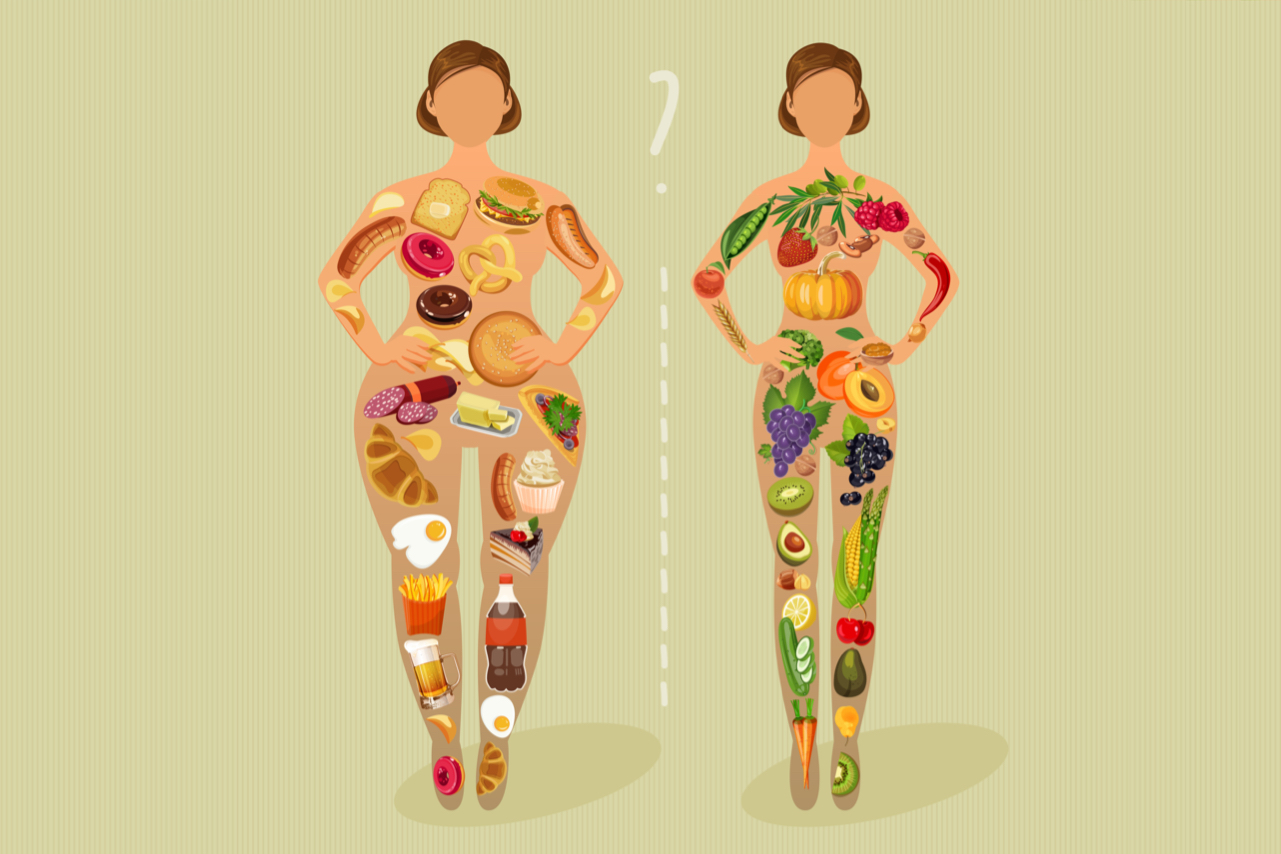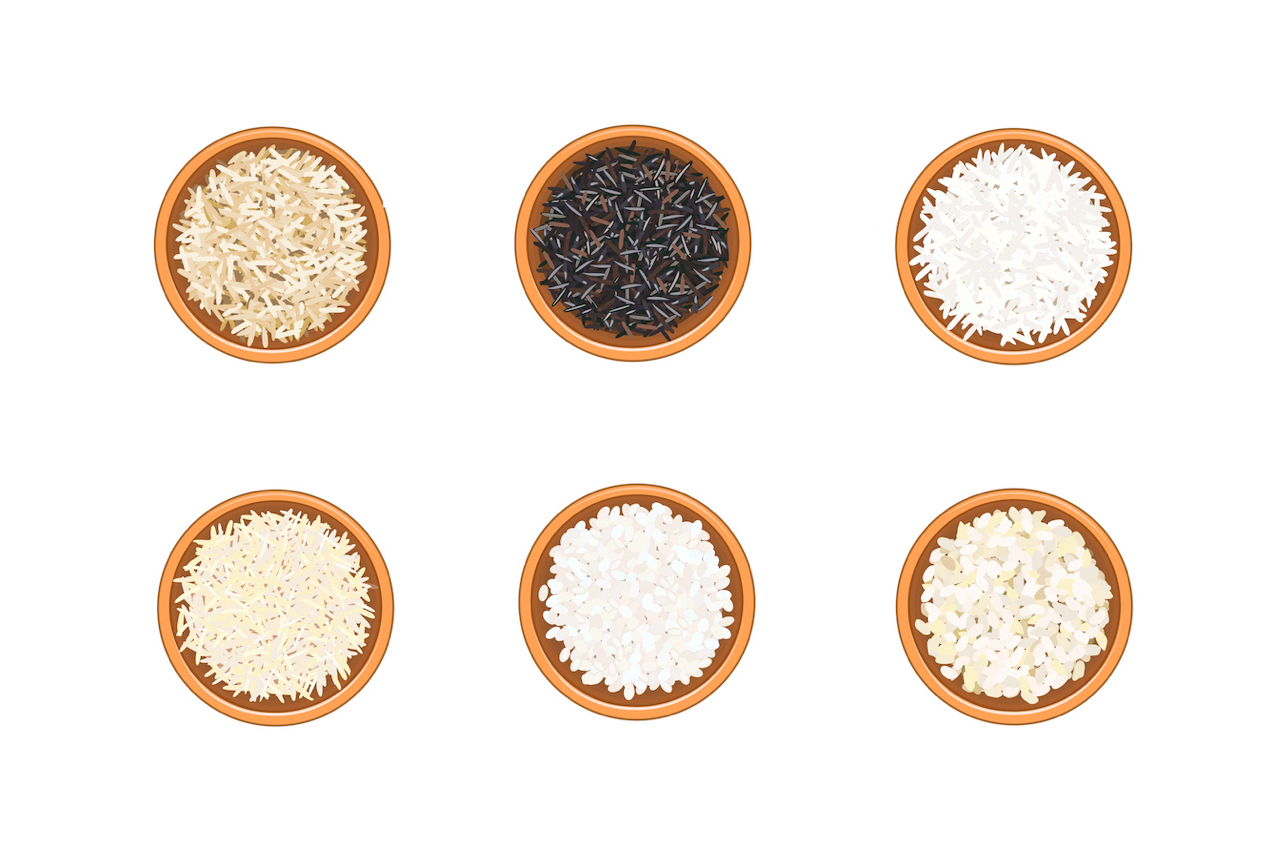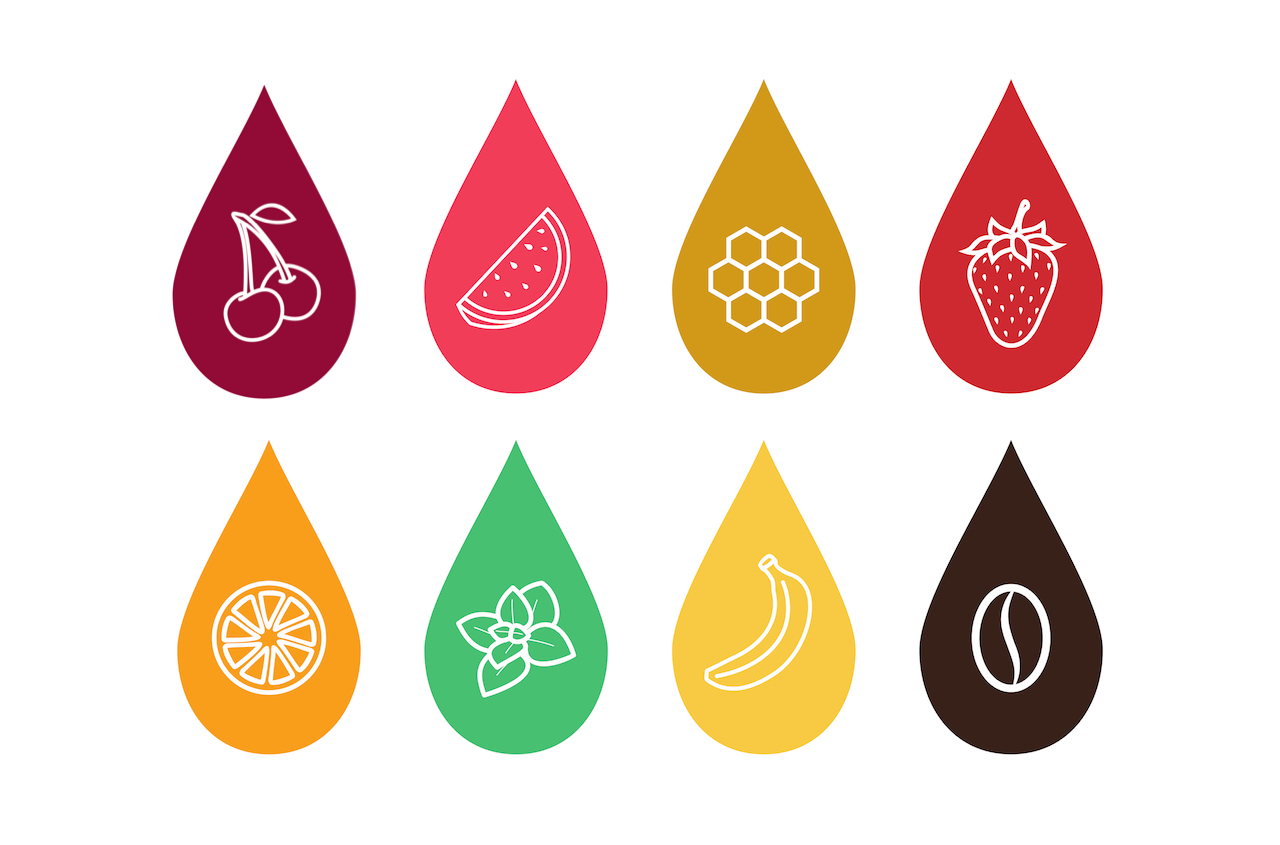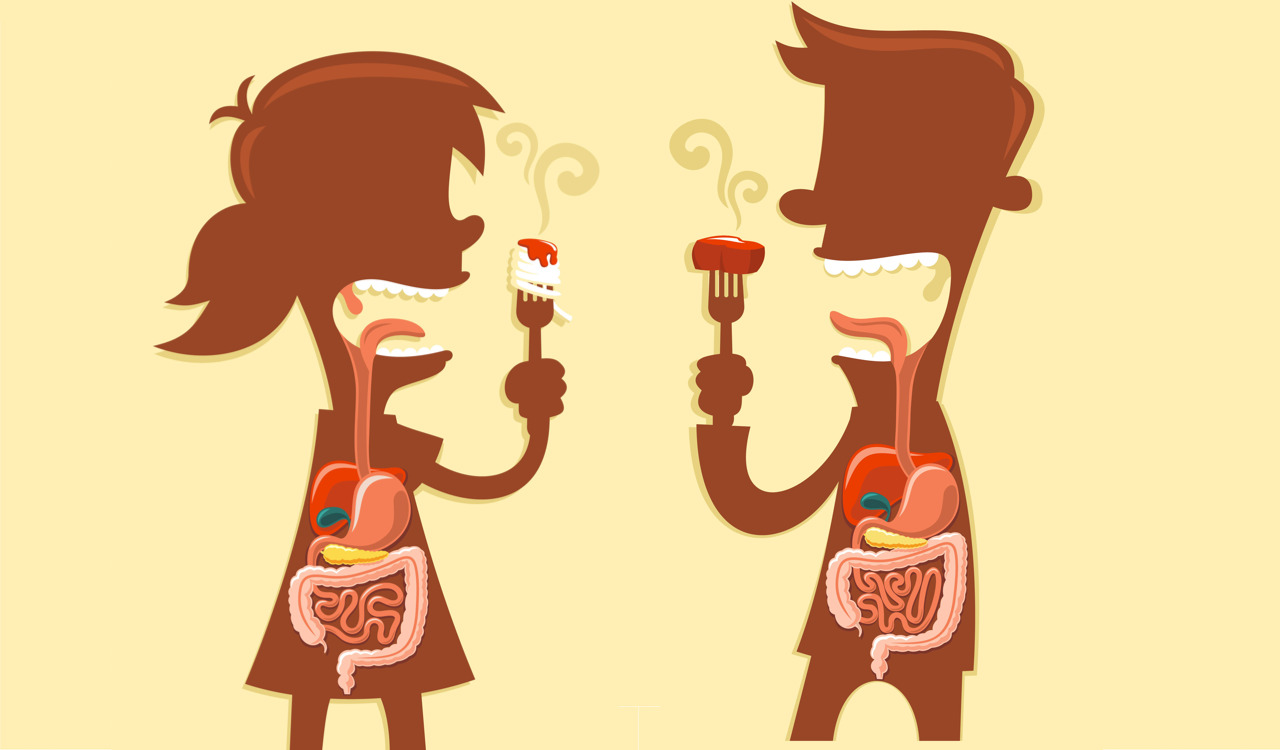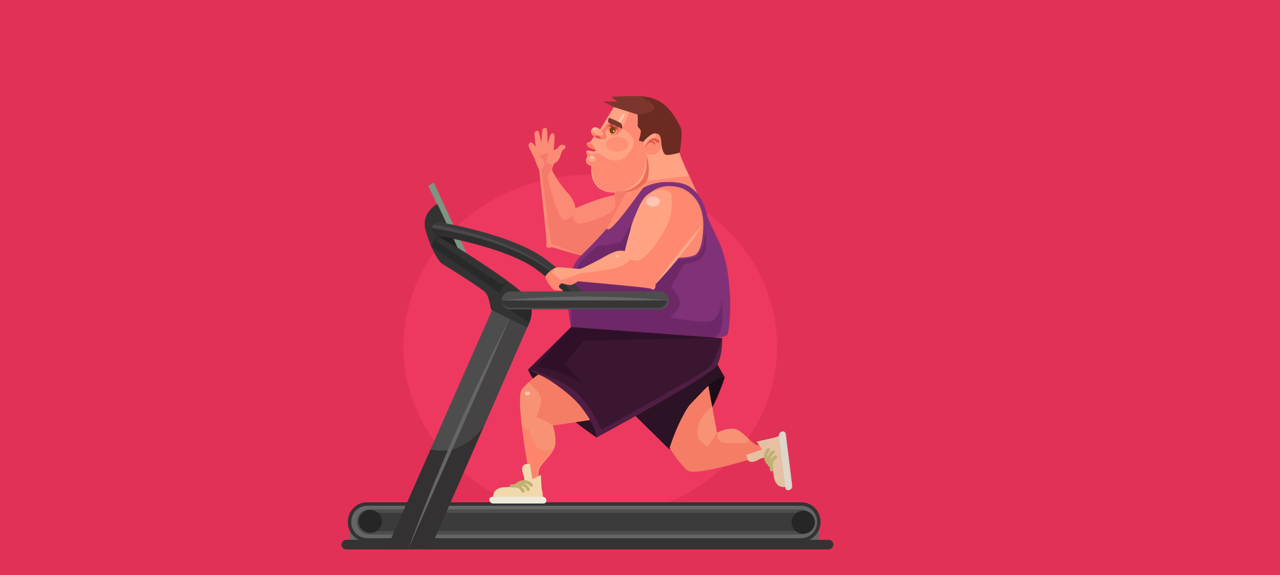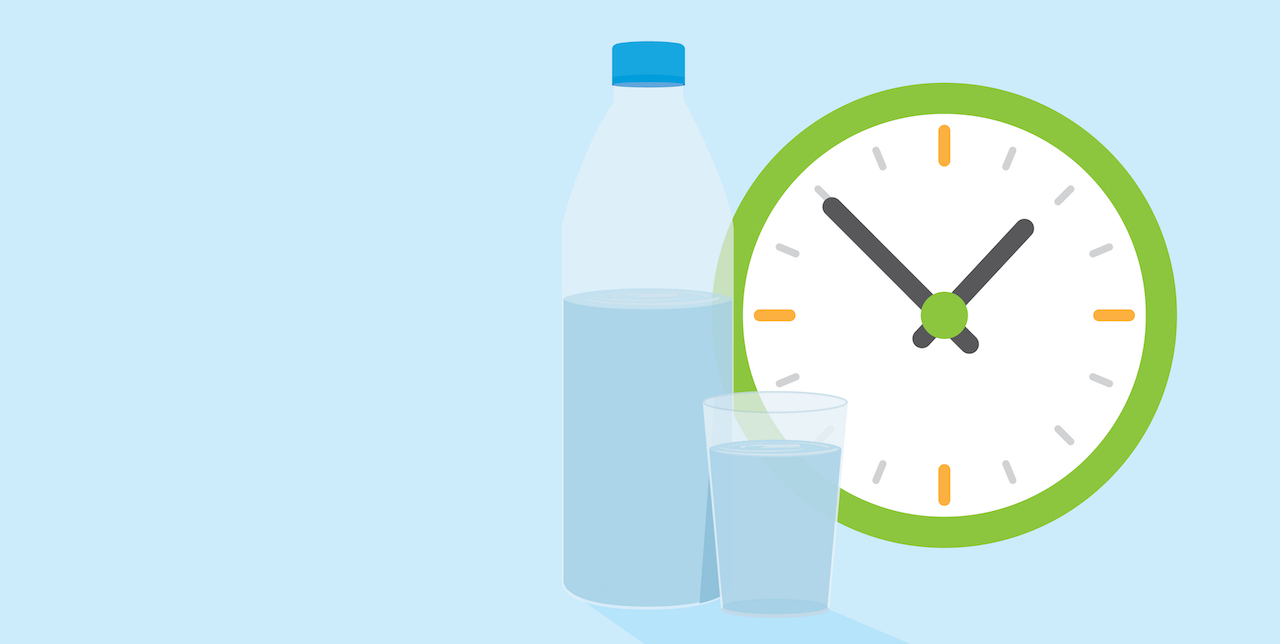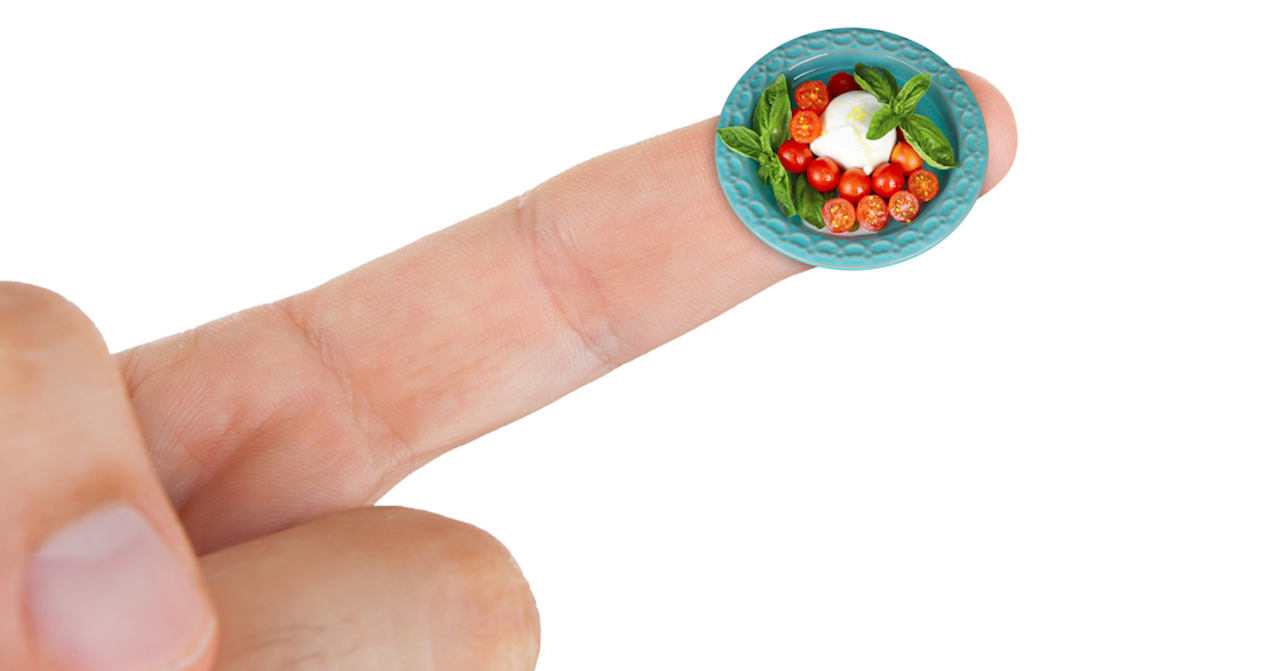Since we don’t have to think much about what happens to food once we have enjoyed it, it’s easy to take for granted what happens once we swallow. The reality is that our bodies are complicated, and highly sophisticated, pieces of machinery. The action of opening your mouth, putting something in and swallowing, sets off a cascade of physiological events, all of which have an impact on your weight.
Your digestive system in a nutshell
Believe it or not, digestion starts before you’ve even put anything in your mouth. Eyeing out a tasty looking meal sends signals to the brain to prepare for said dish. As a result, chemicals are released that prime your body to start working on getting all the goodness from your meal. Enzymes in your saliva make a good start at breaking food down, while chemicals (digestive enzymes) in the stomach get to work on breaking down food into its most basic building blocks. From there, its shipped off to the small intestine, where yet more enzymes and hormones are activated to absorb nutrients from the intestine into the blood. Depending on what those nutrients are, they are sent off to provide immediate fuel to the body, or stored as back up fuel in fat cells.
The chemical drivers: hormones!
We have hormones for everything – to regulate our appetite, to regulate our sleep, to help us get out of a sticky situation and to help us chill out. Riding shotgun throughout the digestion process are 4 important hormones. Understanding these, and how your lifestyle influences them, can make a big difference to how you manage your weight:
- Grehlin, “the hunger hormone”. If you skip a meal, your ghrelin levels rise and make you ravenous, making it nearly impossible for you to resist the next food item you see (spoiler alert: this is why starvation diets almost never work)
- Leptin, “the fullness hormone”. Leptin carries messages from your belly to your brain telling it that you’re full. (This messaging system can take around 20 minutes, which is why you should wait a while before having seconds.)
- Cortisol, “the stress hormone”. When you’re feeling stressed, your body pumps out cortisol to meet the challenge. Cortisol holds on to your fat as a back up energy source based on the assumption that your stress is so bad you may never eat again!
- Insulin, “the fat storing hormone”. Insulin helps the body move energy out of the blood and into the cells. When the cells are all full, it stores the extra energy as fat. If cells are exposed to very high blood sugar concentrations they become resistant to insulin. This means there will be MORE glucose floating around just waiting to plump up fat cells.
Calories in < calories out = weight loss? Not so fast
These hormones (and others!) interact with each other, and your body and can either help or hinder weight loss. One of the most important factors that influence these hormones, is the TYPE of food you eat, not always how much of it.
Here’s a good example. Fizzy and sugary drinks have what we refer to as “empty calories”, so compared to something like an egg, they may have the same total amount of calories, but once they leave your mouth, the pathways these calories travel are significantly different. The drink will deliver you instant energy, spike up your blood sugar and possibly leave you feeling a bit low, and hungry, whereas the same amount of calories from the egg will keep your blood sugar constant and make you feel full and satisfied. Sugary foods also suppress the release of leptin and spark the release of insulin. This means you’ll keep eating more and any excess sugars floating around are going straight to fat! It’s not difficult to consider then that drinking a can of cola every day for 5 will have a vastly different effect on the body and long-term energy balance, and health, compared to eating the same calories from eggs. The reason –a calorie isn’t really a calorie! Shift your focus away from calorie QUANTITY towards calorie QUALITY.
Lifestyle tweaks that could help get weight loss back on track
Genetics, age, medications and certain chronic conditions all play a role in the delicate balance of these hormones. With so many different players involved, it’s not difficult to see how things could start to go wrong! Here are a few things you can try to get the balance back and kickstart weight loss:
Sleep
Just as the type of food you eat influences the release of hormones, so does how you spend your days, and more importantly your nights. Studies have found that those who were deprived of sleep had higher levels of the appetite-stimulating hormone ghrelin and lower levels of the satiety-inducing hormone leptin, with a corresponding increase in hunger and appetite, especially for foods rich in refined carbs (those are the bad ones!). Of course, being awake for longer also gives you more time for snack attacks. And let’s face it, when you’re tired, you reach for whatever is closest, not whatever is healthiest!
What you can do about it: don’t leave sleep as an afterthought. Aim to get a solid 7 to 9 hours sleep each night.
Sitting all day
Regardless of how much exercise you’re doing, if you spend the rest of the day sitting, you could be sabotaging your weight loss efforts. Our body is designed to move, so sitting for long periods causes your body to shut down at the metabolic level. When your muscles, especially leg muscles, are immobile, your circulation slows, so you use less of your blood sugar and you burn less fat. In addition, cells in sitting mode are idle and so don’t respond to insulin, so the pancreas keeps on pumping out more to kick start them back into action. As you can imagine, the more insulin, the more fat is stored and the greater your risk for insulin sensitivity.
What you can do about it: break up your day by getting up and moving around more. Aim for at least 5 minutes every hour.
Ongoing stress
Some stress can be good, too much can be bad. Your body gets into “fight or flight” mode, and to help you through the “danger”, delivers a surge of cortisol. Besides hormonal changes, it also puts you at risk other “unhealthy” behaviours, like smoking, drinking, and in the case of an office worker, very long hours sitting in one place.
What you can do about it: identify your stressors and proactively take steps to address them. Meditation is an excellent way to do this!
Being on a “diet”
Thoughts about weight loss and food can easily start spinning out of control. An unhealthy obsession with food can often just make you want to eat more. Don’t forget too, that the best diet for you is very likely not the best diet for your next-door neighbour. Individual responses to different diets vary enormously.
What you can do about it: embrace a healthy lifestyle, not a quick fix diet. Try to look past that number on a scale. There is so much more to being healthy than being an ideal weight!
References
https://www.webmd.com/diet/features/your-hunger-hormones
https://www.hsph.harvard.edu/obesity-prevention-source/2010/01/01/3-ways-decreased-sleep-contributes-to-overeating-2/
https://www.ncbi.nlm.nih.gov/pmc/articles/PMC3329818/

